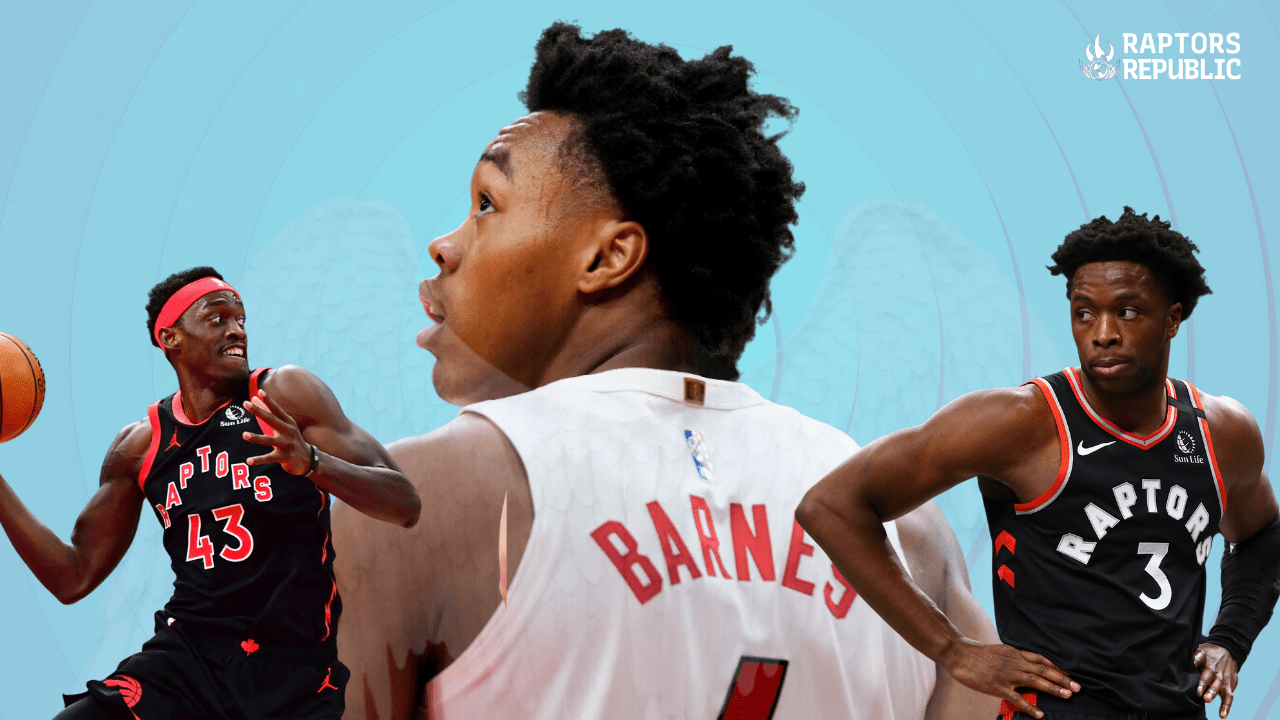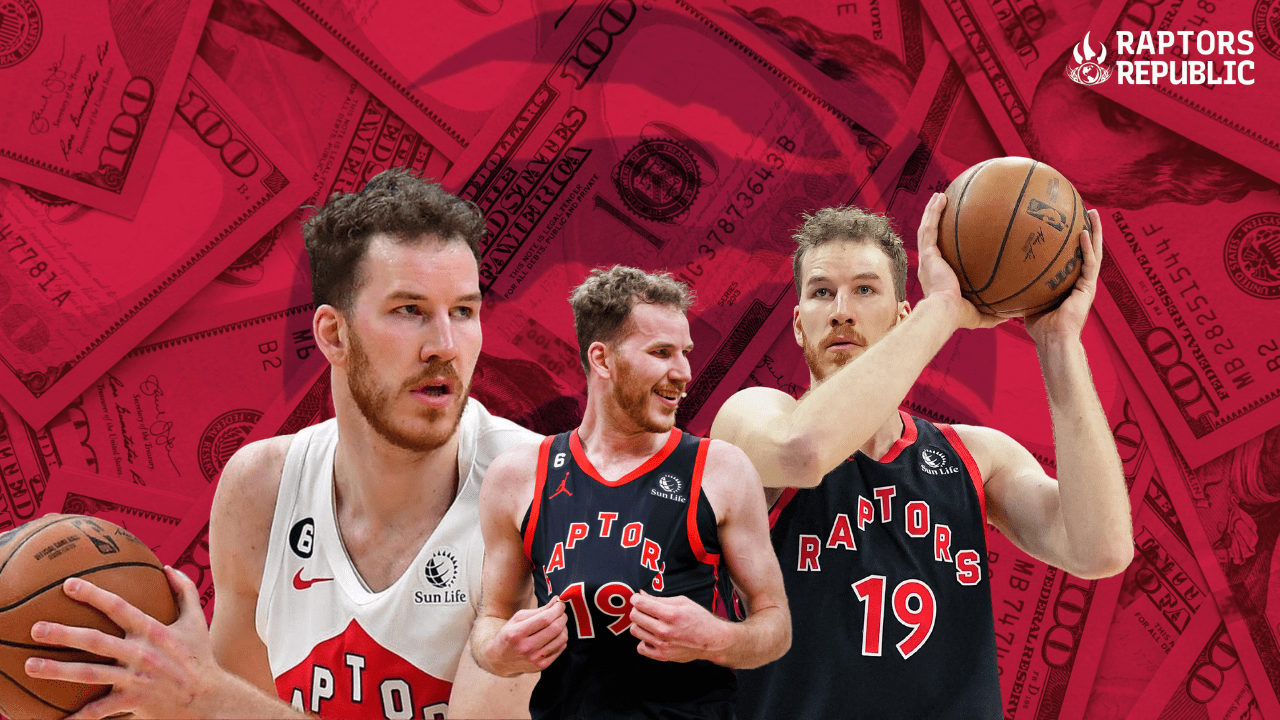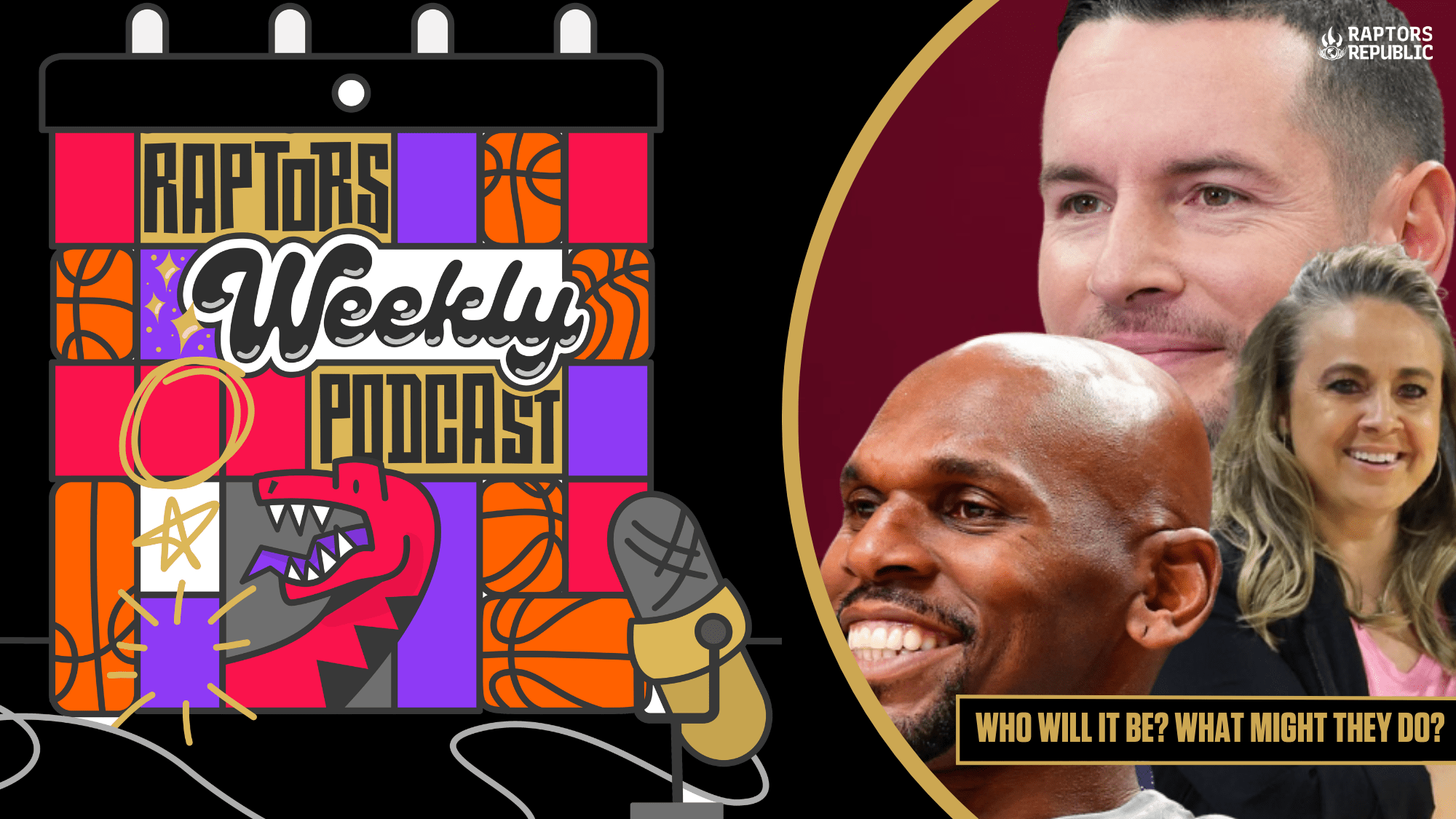This is the second year in a row I’ve written a “lessons from the playoffs” piece, and I borrowed the idea originally from the exceptional and brilliant Caitlin Cooper. Last year, I actually nailed some things. And I have receipts: The Finals showed me that the Raptors needed a center who could play drop — they acquired Jakob Poeltl! I also wrote about the need for pace (check), rim pressure (obviously), shooting (obviously), Barnes in the post (hell yeah), transition points (check) and more.
This year will be different because we don’t know what Toronto’s offensive and defensive systems will be next season. It’s hard to predict without knowledge of coaching, obviously, so I want to focus on more big-picture concepts. Namely: variance.
Parity could partially be a talent-distribution thing, but outside of the demise of the Kevin Durant-Warriors and the Durant-Nets, I don’t really see evidence talent is distributing more evenly across the league. (And Durant joined forces with the incredible Devin Booker, while Kyrie Irving joined Luka Doncic, and James Harden joined Joel Embiid; stars keep flocking to other stars.)
It’s just as likely that parity is a result of the incredible offensive explosion across the NBA. When the average offense is better than it’s ever been, the best offensive players offer less of an advantage because of their efficiency. The Sacramento Kings, for example, just took the defending champions and inventors of modern offense Golden State Warriors to a Game 7 in the first round.
The Raptors, in many ways, have been left behind by that offensive explosion. Okay, yes, 2022-23 was the best offensive season in franchise history. So, the rising tide lifted all boats, even Toronto’s dinged-up and sinking junker. But many of the components of modern offense aren’t in Toronto, namely shooting and rim pressure.
Because offense across the league is so much better, in my eyes variance plays more of a role than ever. A bad team can feasibly get hot and beat a good team, even over a seven-game series, if the good team doesn’t have a means of limiting the role of variance in the series.
Think of it like boxing: How good is a boxer at protecting his chin from opposing uppercuts? (Defending himself against hot shooting from opponents.) How good is a boxer at working the body even when his own uppercuts aren’t landing? (Still scoring when shooting is cold.)
In many ways, Toronto should be encouraged there.
Teams have used all sorts of approaches to hack variance from both directions. In the Heat-Knicks series, the Knicks have tried to overcome a lack of scoring efficiency with ridiculous possession margins (sound familiar to anyone?). It worked against Cleveland (sound familiar to anyone?!) but is getting punished by the Heat (SOUND FAMILIAR TO ANYONE?!), outside of a wide free-throw margin (that they, you know, made enough of in Game 5). Meanwhile the Heat may not be shooting as Steph Curry-ly now that they’re not facing the Milwaukee Bucks, but they combine ridiculous man movement — the second-most miles traveled on the offensive end in the playoffs — with a bruising initiator in Jimmy Butler who is scoring the fourth-highest isolation efficiency in the playoffs. Even when the high-variance scoring goes against them, they can always create a high floor for looks based on that combination.
The Celtics are in many ways the deeper and more versatile and better defensive team than the Sixers, but they simply don’t have enough to insulate them from offensive variance. If the shooting goes cold, they fall back on bad habits — isolations, pull-up jumpers, and forgetting to drive and pass. They can go cold against the Sixers, particularly because Joel Embiid is such an impactful defender at taking away opponents’ strengths in the paint; however, the Sixers have been able to rely on exceptional 2-point scoring from Embiid and James Harden (in wins), as well as free throws, to keep the offense out of the mud.
In the West, the Nuggets and Suns are the epitome of process versus talent. The Nuggets don’t always see their triples drop, but the Suns are shooting 41.0 percent from deep in wins and 28.0 in losses — that’s the largest gap among the remaining teams. Phoenix relies on jumpers more than any other team, but because their jumpers are so often from 2-point range (they have the lowest rate of triples of any team in the playoffs or play-in, even lower than Toronto), the ceiling of their variance is lower, too. They are neither protected from cold streaks nor reaping as many benefits as they could from hot streaks. Good thing their talent level is so ridiculous.
Meanwhile, the Lakers are basically basketball’s version of Jim (Jim) the Iron Chin. If you hit them, you’re more likely to break your fist than their face. Because Anthony Davis is, when healthy, perhaps the best defensive player since peak Dwight Howard, you cannot knock the Lakers out with offensive firepower because you cannot find anything when variance turns against you. They are holding opponents to the second-lowest efficiency at the rim and the lowest rate of free throws. Basically, Davis is annihilating entire swaths of territory like he’s Area X. Opponents may be able to hit triples against the Lakers — Golden State has multiple games with more than 20 made triples in the series — but you’re not getting much else.
Why does that mean the Raptors should be encouraged? Well, they have some reasons to expect success when variance turns against them. Siakam in particular is a great tough-shot maker, particularly in tight spaces. They’re obviously great at nabbing extra shooting possessions. If they added layups and free throws to the package, they’d be golden.
Defensively, the Raptors do a great job of insulating themselves from opponents’ variance. Unlike the Bucks, for example, they have a huge number of defensive packages. (Or did, with Nurse.) They no longer give up a huge rate of corner triples.
On both ends, the Raptors do a fairly good (not great, but good) job of putting insulation in the house. Now they just need to add walls on the outside of the insulation, and maybe, if they’re lucky, some wiring and such in there, too.
Toronto needs a huge amount to return to the Eastern Conference Finals and beyond, of course. But there are reasons to think it will have a few playoff advantages if it does get all that added stuff.
A few, smaller things:
- Is cutting the most important component of basketball? I’m starting to lean that way. It moves the defense, creates rotations, can result in layups or open triples behind the cut, injects pace, and does so much more besides. Finding those soft spots is just great offense, every time, without fail. Without Butler’s cuts, even with all the absurdity, I don’t think Miami was beating Milwaukee. To a lesser extent, cuts from players like PJ Tucker and Bruce Brown have, at times, won moments of individual games.
- From the point of view of the Raptors, Precious Achiuwa is a brilliant cutter, some of the time. (It’s strange, the skill really varies from game to game.) O.G. Anunoby is excellent. Scottie Barnes and Pascal Siakam can be when they find the right pocket of the game. There’s something to it for Toronto, but it’s not at the level it needs to be across a full game.
- Versatility is king. Holy hell is it useful for an offense to have a bunch of different system looks, rather than individual sets, to which it can turn. Golden State’s Steph-runs-around offense isn’t working for him? He can just pick and roll opponents to death. Picking at matchups with different screeners, tweaking screen order, pitch backs, rescreens: all that is really fun and good. But sometimes it’s better to just be able to be an entirely different offense for a few possessions. The Sixers have multiple processes (and multiple pitch speeds with Harden playing slow and Maxey fast). The Nuggets do as well, particularly with Jokic able to do just about anything. Right now, those two teams are looking pretty good — and also, including play-in teams, have two of the top six playoff offenses so far.
- Offensive rebounding has swung more than one playoff game. Damn the league really caught up to, and surpassed, Toronto’s strategic advantage quite quickly. You really only have an edge in that stuff for one season at the very most. That was, in hindsight, 2021-22.
- There’s no heliocentrism left in the playoffs. LeBron stopped playing that way a while ago, and Harden stopped more recently. Trae Young and Luka Doncic are gone, too. But there is plenty of diversity. There’s the handoff-hub offense in Denver, lots of motion in Miami and Golden State, pick and rolls in Los Angeles and Philly. There’s extremely specific set offense in Phoenix and randomness is Boston. There’s even a fair amount of isolation play, particularly in New York (but also in Philadelphia and Boston). The point is that there is no one way to play that works best. Just gather talent and depth and fit and run whatever empowers the best players.
- That doesn’t mean you can do anything on the offensive end. Because the average level of execution is so high, simple set plays haven’t really been cutting it. Initiating out of Chicago has sort of gone by the wayside. And even the teams that still do it a couple times a game — the Warriors, Nuggets, Heat — aren’t getting good stuff out of it. There’s a reason so many teams run less scripted stuff and more read-and-react. You just have to have the talent level (and shooting, and rim pressure) to make it work.
- But when games call for scripted sets, the execution and creativity this postseason has been off the charts. Some of the ATO work from coaches has been nasty, nasty stuff. Tom Thibodeau and Erik Spoelstra especially have separated themselves (with teamwide points per possessions after timeouts over 1.2). The Raptors were always great there, and they were great there in the play-in, too. Good clipboard kung fu does not necessarily make a successful coach — there’s more to the job.
- That doesn’t mean you can do anything on the offensive end. Because the average level of execution is so high, simple set plays haven’t really been cutting it. Initiating out of Chicago has sort of gone by the wayside. And even the teams that still do it a couple times a game — the Warriors, Nuggets, Heat — aren’t getting good stuff out of it. There’s a reason so many teams run less scripted stuff and more read-and-react. You just have to have the talent level (and shooting, and rim pressure) to make it work.
- Having one poor defender, or at least a physically limited defender, doesn’t doom a smart defense, or at least it hasn’t so far these playoffs. The Sixers have thrived with Tyrese Maxey on the court. Jordan Poole has survived on defense. Max Strus and Duncan Robinson and company have held up just fine. But teams can’t ask too much of those defenders. Landry Shamet was mostly playable and even won a game. I think the Raptors have asked too much of Gary Trent jr. at times during his tenure with the team and also haven’t had his back when he makes mistakes. (That was definitely the case in the playoffs last year when the Raptors allowed Trent to switch onto Harden off ball and then onto Embiid in the pick and roll.) Being real about who a defender is can help a team survive his minutes.
- Part of that is probably the offensive boom. If everyone is scoring 1.1 points per possession, then does picking on a weak defender in static switch-and-iso offense really score more than a normal shot? When finals scores were 96-92, yes, attacking like that definitely paid off. When it’s 121-118, I’m less sure. Toronto shouldn’t have been shredded over the first half of the season on the defensive end, even with Trent and Barnes and a diminished VanVleet losing the plot at the point of attack. That was about scheme (and commitment to it) as much as individual abilities.



